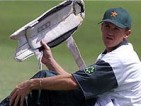C’est quoi, le cricket?
Matt Pitt |To borrow a phrase more commonly used in football, it’s a funny old game. In the era of Twenty20, pink balls, black bats and switch-hitting, a common assumption is that global awareness of cricket as a sport is skyrocketing, and that the game is on the verge of breaking through the “glass ceiling” of its British colonial roots to become a major world sport. However, in the quaint French town of Laon, less than 300 miles from Lord’s itself, nothing could be further than the truth.
On the face of it, Laon has little to attract the attention of your average “Englishman abroad” – the only remarkable things about it are its centuries-old cathedral and the fact that it possesses Europe’s only fully-automated municipal cable-car system. It has even less to attract your average sports fan – a town of 27,000 with a non-league football team and no rugby team to speak of, where a bar that shows regular sport cannot be found for love nor money.
This void of sporting culture is what faced yours truly, as I embarked on eight months as an English Language teaching assistant in Laon, starting last October. The prospect was a fairly daunting one. I doubted whether I would be able to watch any cricket in those eight months, a doubt which turned out to be well-founded – and my lack of home internet access meant radio or online discussion of the game were rendered difficult. So how would I get my sporting fix while living alone in a town where the only sport the locals seemed to enjoy was chain smoking? How would I satisfy my passion for cricket in a country where “Cricket” is nothing more than a brand of cigarette paper?
After a month of teaching, I found my answer. After telling a 15-year-old pupil, in traditionally simplified English, that “the sports which I play are football and cricket”, I was faced with the question that gave me the title of today’s ramblings – c’est quoi, le cricket? Other questions and assertions were more specific, but for the most part, less relevant – the vast majority mistook it for croquet; many had heard the word but had no idea it was a sport; a rare few did know it as a sport, but could only assert that “it’s like baseball”, which in theory is a sound comparison – however, the fact that they barely knew what baseball was meant that their suggestions were rendered a little less valid.
It became apparent that the vast majority of my pupils had no working knowledge whatsoever of the game of cricket – this revelation did actually surprise me somewhat, but I felt it should be looked upon as a challenge. So, it was with great gusto that I set about working on an hour-long lesson, to be taught to seven different classes, that would leave them with a solid knowledge of the basics of the game that could be passed on to others of their generation, and maybe even put into practice one day.
The difficulty in constructing such a lesson was that the vast majority of important cricketing terminology – wicket, stumps, bails, bowler, batsman – cannot be directly translated into French. Constructing a “vocabulary list” therefore became somewhat of a trial – the word used to mean “stumps”, piquets, in fact means more like “sticks”; the word for “wicket”, guichet, has no direct translation in English, but is so vague that it is also used to describe the part of a train station in which tickets are bought; and the only word that could feasibly be used to mean “to bowl” was lancer – which, laughably, is actually the word for “to throw”. I silently prayed my pupils’ understanding would never develop to the extent that they could ask me my opinion about the legality of Murali’s bowling action. Thankfully, that possibility was virtually non-existant.
After no little time spent wondering how to impart the very basics of the game, I decided on an altogether different strategy – working backwards. With the aid of the one DVD set every cricket fan should own – the 2005 Ashes set – I threw my pupils in at the deep end, beginning my lesson each time by showing footage of Andrew Flintoff’s “hour of power” on the third afternoon at Edgbaston. Amusingly, after seeing their very first delivery – Brett Lee being struck majestically for six over mid-wicket – the pupils were already asserting that “it’s just like baseball!”. After several more gigantic sixes, they were even more convinced that cricket must be some strange English variant on the time-honoured American national sport, and not the other way around. I didn’t have the heart to tell them that less than 0.5% of the deliveries in your average Test match were dealt with so conclusively by the batsman.
The pupils’ reaction to the commentary was particularly enjoyable – even to those with the most basic grasp of English, Mark Nicholas’ “oh, hello, massive…..massive!” was a source of untold hilarity. I myself began to regard the sound of Nicholas’ voice as a nostalgic reminder of home, and not only of home, but of the days at home when one could watch timelessly brilliant cricket on free-to-air television. My pupils would never understand the simple joy of sitting down for five days to watch a gripping Test match such as the one they saw unfolding before them – indeed, they were aghast at the very notion that any sport could be played for six hours a day, five days in a row, let alone watched for that long. I decided not to tell them that there were numerous shorter forms of the game – mostly out of desire to preserve their interest in the longer form of the game, but also partly because I hadn’t had time to explain the concept of overs – or, indeed, batting and bowling themselves. Not just yet, anyway. An hour is a long time in teaching, just as in cricket.
The general reaction to the rules of the game itself was one of mild confusion – it is tempting to suggest some of the pupils would have made good ICC employees, but I would never be so mischievous. They seemed to grasp the concept of scoring runs, and my explanation of how to get oneself dismissed – probably my personal area of expertise – seemed fairly comprehensible. Oddly, the idea that the batsman’s stumps were to be protected was difficult to put across, yet they understood perfectly the concept of being caught out, and that of being run out.
The next step was to put their new knowledge into practice – well, in a manner of speaking. I fast-forwarded the DVD to the best bit – the last morning at Edgbaston. My pupils witnessed the entirety of the conclusion of the match, thereby increasing the value of their experience as a sports fan immeasurably – and to my surprise, they grasped the events of the last half an hour or so’s play (condensed into about six minutes by the highlights package) fairly well. One amusing thing to note was that their interpretation of the scoreboard when it appeared was that Australia were winning by 260-odd runs to 9. Clearly, these pupils have grown up in a world where England getting roundly destroyed is par for the course in every sport. They were surprised to discover that England had actually won the match – the concept of a sport where both teams play in white had proven a little difficult to comprehend on a visual level, to kids who have grown up watching football teams play in ever more colourful kits.
With my pupils having witnessed one of the biggest moments in English cricketing history, their experience of the game was already greater than that of many whose nations do play cricket – whether or not their experience of the game sticks with them to the extent that they recognise it in future, only time will tell. France’s, and indeed, the whole of Europe’s, role in the future of cricket may not be a pivotal one – but with the ICC’s Affiliate Nations program growing every year, who knows? One quote from a pupil does indicate a ray of hope – at the end of one lesson, I asked some 16-year-olds whether they would like to play the game in future, and their response? “Of course, we’re gonna start a team!”



Great article. My family used to have Italian exchange students, and I rmemeber trying to teach them the game in the back garden. Just trying to get them to bowl with a straight arm was a challenge in itself, they seemed to enjoy batting more!
Comment by stumpski | 12:00am BST 30 June 2008